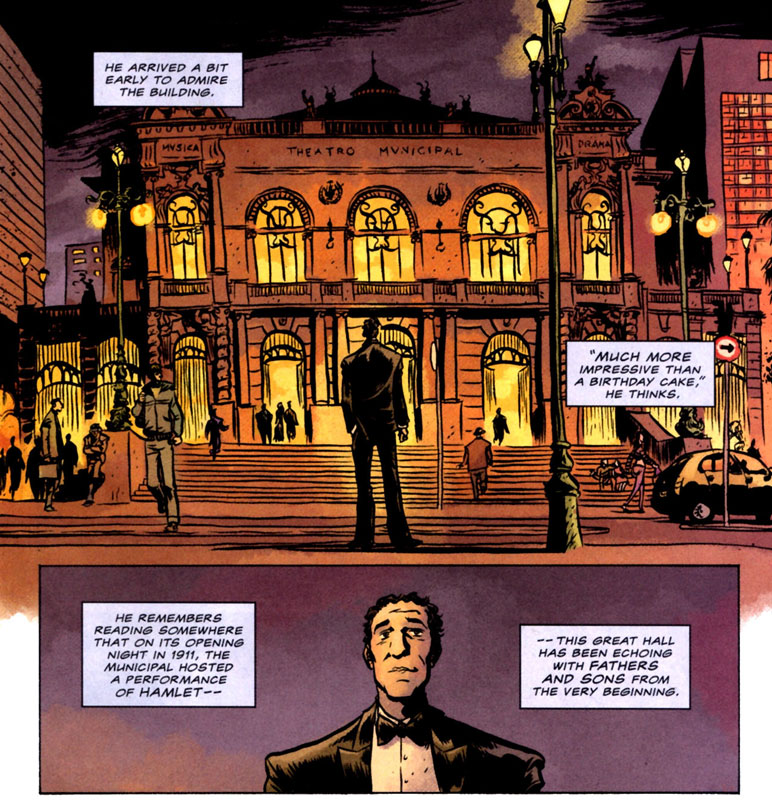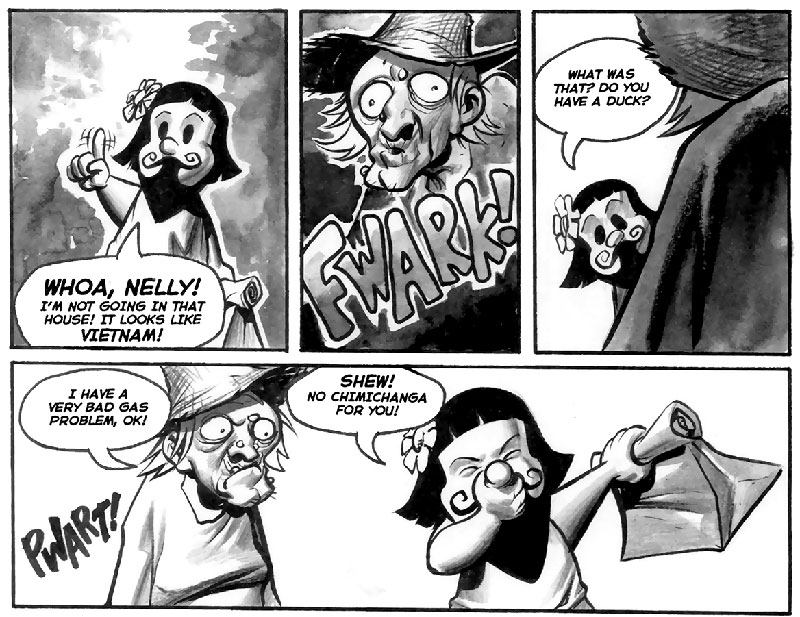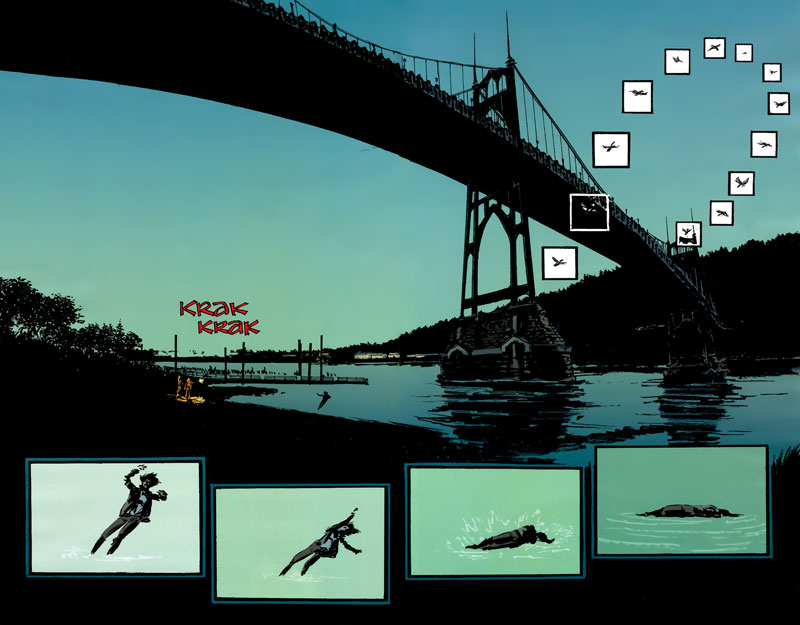Daytripper #1
After working for the superheoes of Casanova and The Umbrella Academy, the twin artists Fabio Moon and Gabriel Bá have come back down to earth with Daytripper, their new series for DC Vertigo. The lineart for this issue is beautiful. It's not often in mainstream comics that one gets to see such masterful brushwork. Moon and Bá eschew meticulously rendered and precise detail for a looser, impressionistic, approach that's more interested in conveying the panel's emotional resonance. And Dave Stewart's colors avoid the muddying effect found in many Vertigo titles.
By contrast the script for the story lays it on a bit thick. Brás de Oliva Domingos is an obituary writer living in San Paulo. He writes about the passing of some of his country's most famous figures, but has his own literary ambitions to become a recognized novelist. Unfortunately for him, he lives in the shadow of his father, a celebrated author. Brás' concerns of living up to the legacy of his father have contributed to his writer's block. And the situation is exacerbated when he learns that the elder Brás is being honored by a gala event. If the symbolism of the story setup isn't enough, the younger Brás remembers that the theater that will hold the event was known for a staging of Hamlet. Just to reinforce the Oedipal message, Brás wonders down a side street to buy a pack of cigarettes (He smokes the same brand as his father) and enters a bar named after the original owner, but now run by his son. What makes the script so stilted is that the characters' dialogue makes a point in spelling out what readers should have worked out through careful reading the story. Moon and Bá commit a few mistakes in belaboring the point.
 Given the shock ending of this issue and the naturalistic setting of the story, I'm curious to see how the rest of the series will shape up. Despite its pitfalls, there is plenty of ambition and talent found here that makes this a series I'm looking forward to following in 2010.
Given the shock ending of this issue and the naturalistic setting of the story, I'm curious to see how the rest of the series will shape up. Despite its pitfalls, there is plenty of ambition and talent found here that makes this a series I'm looking forward to following in 2010.Chimichanga #1
Eric Powell is another artist with an appealingly expressive style. The creator of The Goon has a new miniseries called Chimichanga, which displays his affinity with childlike humor. A traveling circus is populated by freaks who aren't exactly all that freakish. There's the fortune teller with a fairly normal looking goat; The not so strong strongman; There's an unlikeable boy faced fish and his gloomy faced clown companion. Finally there's a tiny but sassy bearded girl who's fond of chimichangas. She trades with a witch a piece of her hair for a large ostrich-like egg that hatches into a hulking, but harmless, beast whom she quickly names after her beloved Tex-Mex meal.
Powell draws cartoony figures that wouldn't look out of place being complimented by vivid colors. Instead he renders them in gradated monochrome. I'm not entirely convinced of this approach, but it doesn't detract from Powell's strengths as an artist. Every character looks like its been carefully designed, and everyone of them looks distinct, quirky and cute, but just creepy enough to make an impression on younger readers. The bearded face girl is a wonderfully realized amalgamation of the truly bizarre and the impish.
 This is only a three issue series, but it's shaping up to be irreverent and goofy fun. And yes, it's entirely appropriate for kids.
This is only a three issue series, but it's shaping up to be irreverent and goofy fun. And yes, it's entirely appropriate for kids.Stumptown #1
Stumptown marks the return of Greg Rucka to writing female sleuths. He has an affinity with strong female leads that for the most part talk and behave no differently from their male counterparts. Although in this latest effort, the protagonist is a little less proficient than past creations. Artist Matt Southworth draws with rough lines calculated to evoke the gritty atmosphere appropriate for the milieu. But I'm not sure if the colors supplied by Lee Loughridge help as they tend to obscure some of the details in the linework. I get that Portland is supposed to be dark and gloomy. But does the city have to look so out of focus?
Dex is a detective forced to take up a job in lieu of paying her substantial debt with a casino. The casino owner's granddaughter has gone missing, and Dex soon discovers that several factions are working at cross purposes to find her. It's a familiar setup for noir fiction. But Rucka is in his element with this genre. All the plot elements are cleverly executed: The casino owner is an elderly matron who likes to knit. The mob boss is a conventional figure, but ably portrayed with a suitable evil soliloquy. Dex is written as a mostly external character: A down on her luck P.I. who tries, usually without success, to try to talk her way out of the holes she digs herself into. But despite her glib behavior, she manages to earn enough of a living to put a roof over herself and her younger brother who suffers from Downs Syndrome. Everyone who knows her starts a conversation by asking about him.
 While Stumptown doesn't reinvent the detective mystery, it's a capably told start to an interesting page turner from a writer known for this kind of work. Dex is an interesting variation of the usual Rucka heroine: More working class professional than master sleuth, and more of a family member than loner figure.
While Stumptown doesn't reinvent the detective mystery, it's a capably told start to an interesting page turner from a writer known for this kind of work. Dex is an interesting variation of the usual Rucka heroine: More working class professional than master sleuth, and more of a family member than loner figure.



